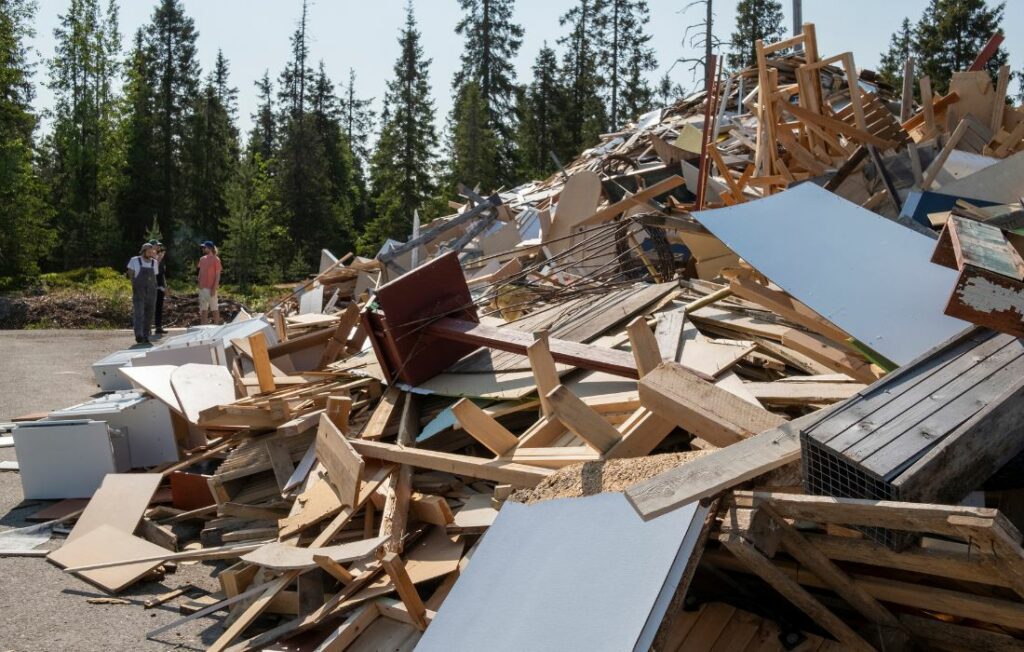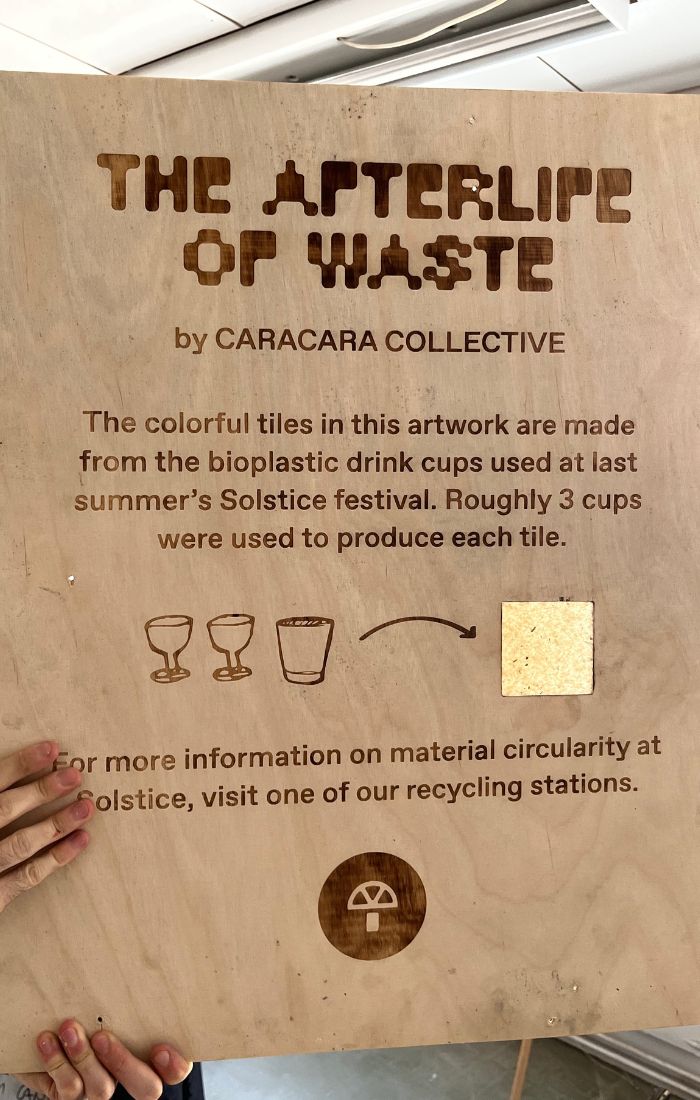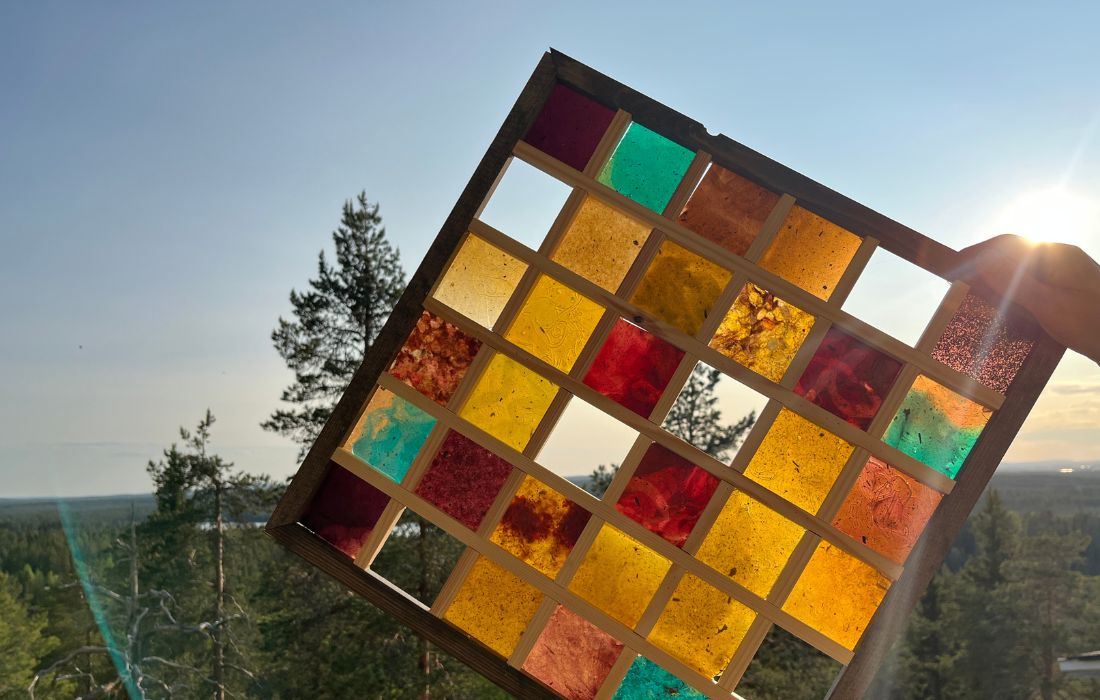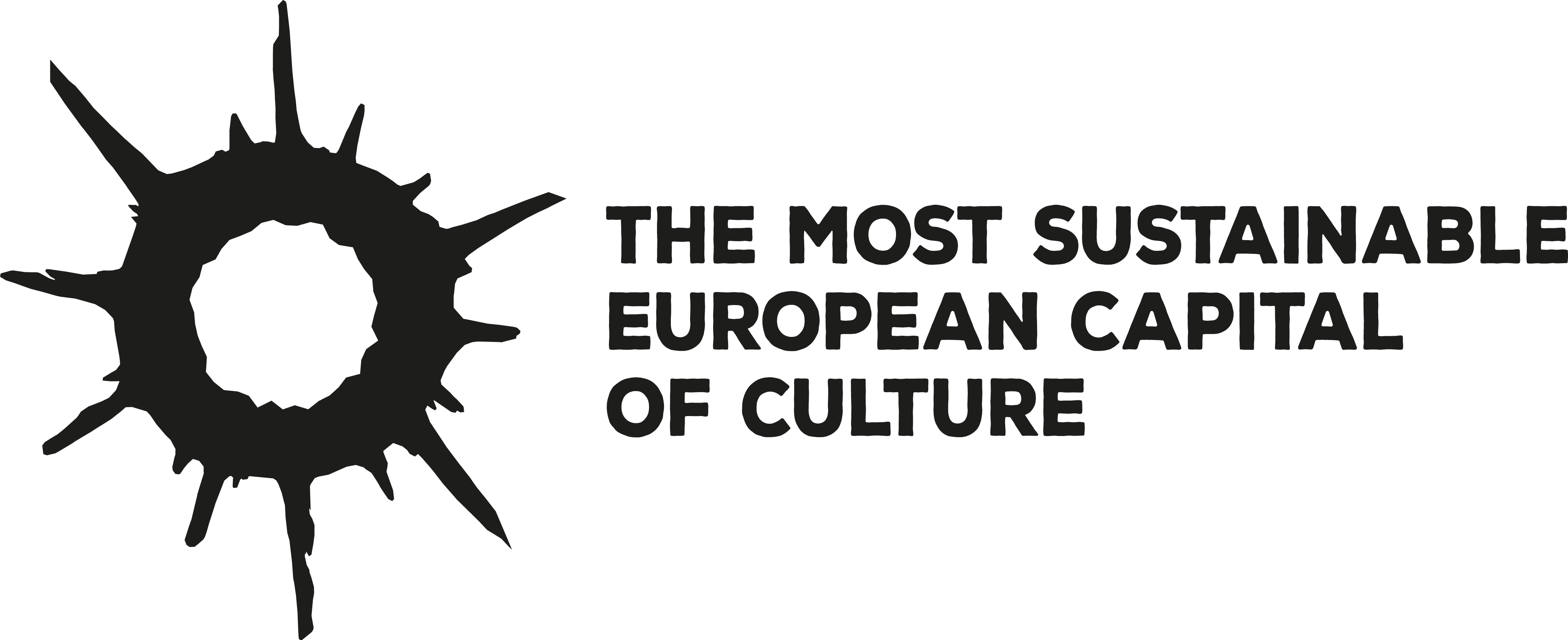Skillful and Efficient Recycling

Caracara Collective’s development innovations in waste management and utilization of waste as construction material at a festival
Caracara Collective designed innovative waste separation points at the Solstice Festival and reprocessed waste as regional art for example. In 2023, the waste management took an even larger step towards an environmentally friendly future.
Innovation Trial
The Solstice Festival sought an efficient way for waste separation and recycling. In 2022, the experimental sustainable solution design studio Caracara Collective designed sustainable and easy to use waste separation points for the festival that randomly awarded users with drink tokens. The stylish, participatory waste separation points were entirely constructed with recycled material in cooperation with Kuusamo’s Waste Transfer Station among other operators.
On top of the waste bins, there were three participatory ashtrays at the festival that attendees could use to vote for their favorite music genre by putting their cigarette butt into the corresponding compartment. Before the festival, about 500 recycled film roll tubs (about 3 kg of plastic) were collected from Helsinki’s photography stores that were distributed to the festival attendees to be used as portable ashtrays.
In the follow-up trial in 2023, the goal was to develop the festival’s waste management comprehensively towards the implementation of the circular economy plan. The recycling plans were extended to span over the waste caused by festival construction as well as restaurant and serving areas’ waste separation and recycling. On top of this, the trial focused on the utilization of bioplastic waste with the use of plastic extrusion.

Results
All waste collected in waste bins during the 2022 festival was weighed. 59 kg of waste was collected and the largest portion (54,7 %) ended up as mixed waste. Even though many attendees did not recycle at all, the recycling bins worked well: 80 % of their contents had been recycled correctly. The tokens also motivated people to separate waste even though they caused unnecessary use of the waste bins in hope of receiving a token. The ashtrays also worked quite well but the tester admitted that their placement requires development. A total of 635 kg of virgin raw material was saved with the separation points built out of recycled material.

For binding organic waste such as paper, saw dust and berry skins, Caracara Collective developed a natural glue. The materials can be used to create temporary festival solutions that can be decomposed into soil or can be reprocessed into new materials after the festival.
A new plastic extrusion device was developed for the utilization of plastic that melts and molds plastic and bioplastic into new products. Different samples were produced out of bioplastic collected from the festival and from plastic waste collected from other operators. At the same time, it was studied how natural pigments, such as berry waste, can be mixed with materials to create even more impressive recycled products.
Three waste separation points were constructed in the festival area in order to recycle the waste emerging due to festival building and the waste was recycled efficiently because almost all festival structures, apart from the art programme, were re-used from last year and the construction workers were briefed about recycling. The separation points of the attendees were re-used from last year and a fifth compartment for cans and glass bottles was added to them. The participatory token mechanisms were removed from the points because though they were fun and participatory, they did not advance recycling efficiency. Also, the laser-cut wooden signs at separation points encouraged recycling and last year’s film roll tub ashtrays were re-used by the festival attendees.
For the final waste separation Caracara Collective produced a waste separation point where all waste bag contents were separated into the correct compartments: plastic, paper, cardboard, metal, deposit, biowaste, dangerous waste and impure wood waste. Wet and food-stained waste were recycled as mixed waste. The volume of festival waste was measured to help future waste management plans. Bioplastic mugs and bagasse food containers were separately collected for preservation.
With the collected amount of plastic waste, one could produce approximately 150–280 vinyl records or 160–380 T‑shirts. A record pressing company in Helsinki, Puristamo, expressed interest in possible cooperation in producing vinyl records from the bioplastic. The bagasse produced for the festival can be, for example, re-processed by boiling and grinding into a moldable mass or can be utilized as substrate for mycelium or edible mushrooms. All other waste was delivered to Lassila & Tikanoja who will process it into, for example, biogas for heat and electricity production as well as transport fuel, new plastic, new cardboard, particle boards and new metal products.
In 2023, Caracara Collective wanted to create an artwork out of bioplastic as an example of re-utilization of festival waste. The samples created with last year’s plastic extrusion device were too fragile and the process would have required too much energy and time. With the new production method, it was possible to create plates of higher quality and color effects quicker. The final concept consisted of four square modules where bioplastic sheets were attached to a wooden frame. The festival’s traditional Midsummer pole was decorated with them. The cooperation with Kuusamo’s Waste Transfer Station that begun in 2022 continued in 2023 when the chosen creator of the main artwork of the Solstice Festival, Anastasia Sviridenko, collected all materials for her art from the Waste Transfer Station.

Altogether in 2023, the trial succeeded in developing a more efficient waste management system all the way from waste collection to waste separation and processing. The more thorough internal organization and communication compared to last year helped with recycling of construction waste as well.
Thanks to the careful waste separation, over 80 % of the festival waste ended up recycled or re-used. During the trial, Caracara Collective also managed to drive their material trials forward and build up their material bank which makes the creation of even more impressive recycling artworks possible next year.
Briefly
- The trial was organized by Caracara Collective.
- The event was the electronic music festival Solstice in Ruka, Kuusamo, in 2022 and 2023. The festival is held at Midsummer.
- The goal of the trial was to increase the event’s recycling rate and re-use the waste innovatively as art, furniture and in other uses. The construction of the innovations, such as the waste separation points, out of recycled material was important.


